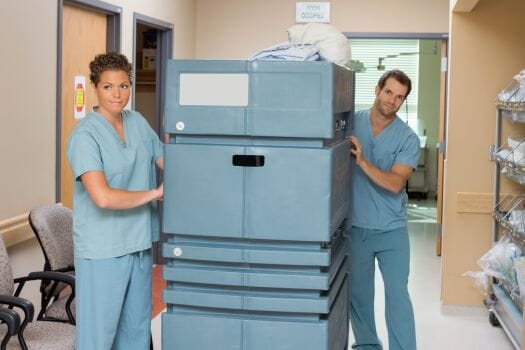Waste handling methods that HELP SAVE LIVES
Waste handling methods that HELP SAVE LIVES!
The US Environmental Protection Agency (EPA) estimates that the nearly 5,000 hospitals in the US produce over 6 million tons of waste on an annual basis and spends over $10 billion annually in disposal costs. The public health crisis of COVID-19 in 2020 has led to a significant increase in overall waste generation and specifically medical waste.
Xanitos and waste management.
Xanitos has worked to minimize the overall risks and impact associated with healthcare waste management. As a valued partner to over 100 hospitals, Xanitos implements waste management programs that streamline the various waste streams in the hospital environment and abide by the guidelines laid by OSHA and CDC.
These guidelines are designed to protect the patients and healthcare workers who generate medical waste and those who manage the waste from the point of generation to disposal, from the cradle to the grave.
- Given the fact that only about 10-25% of the medical waste is hazardous, treatment and disposal costs could be greatly reduced through proper segregation. Segregating hazardous from nonhazardous waste reduces the risks around waste handling as well as costs.
- Only transport waste in designated and approved containers. These containers should be covered, rigid, color-coded, and built for ergonomic safety.
- Never comingle waste. All waste types (regular waste, soiled linen, biohazardous waste, etc) should always be transported separately to the appropriate designated storage area. Dedicated staff should be trained on proper transportation and storing procedures.
- Never manually compress waste to make it fit into the waste container. Doing so puts you at risk of needle sticks

ENGIE Insight and Xanitos’ Recommended Bin Optimization
Many hospitals have invested heavily in improving waste stream compliance through Rapid Cycle Improvement Programs. Xanitos has worked with waste management consultants such as ENGIE. Together, Xanitos and Engie have made improvement in waste workflows, bin optimization and participated in site-level audits.
What is Bin Optimization?
- Review the spatial layout of the workplace to optimize bin location and type. Look to implement multi-waste stream receptacles and reduce overall bin count!
- Review, remove, replace, or move waste bin signage and labels. Signage should be up to date and can be consistently found in all departments.
- Organize centralized soiled utility rooms with clear bin placement.
- Everyone generates waste! All departments require waste stream education and to buy-in on the solution.
Measure progress! Tracking bin optimization action items and performing internal audits can ensure your team is moving in the correct direction.
Xanitos is committed to helping save lives and will help you find the solution you need.






